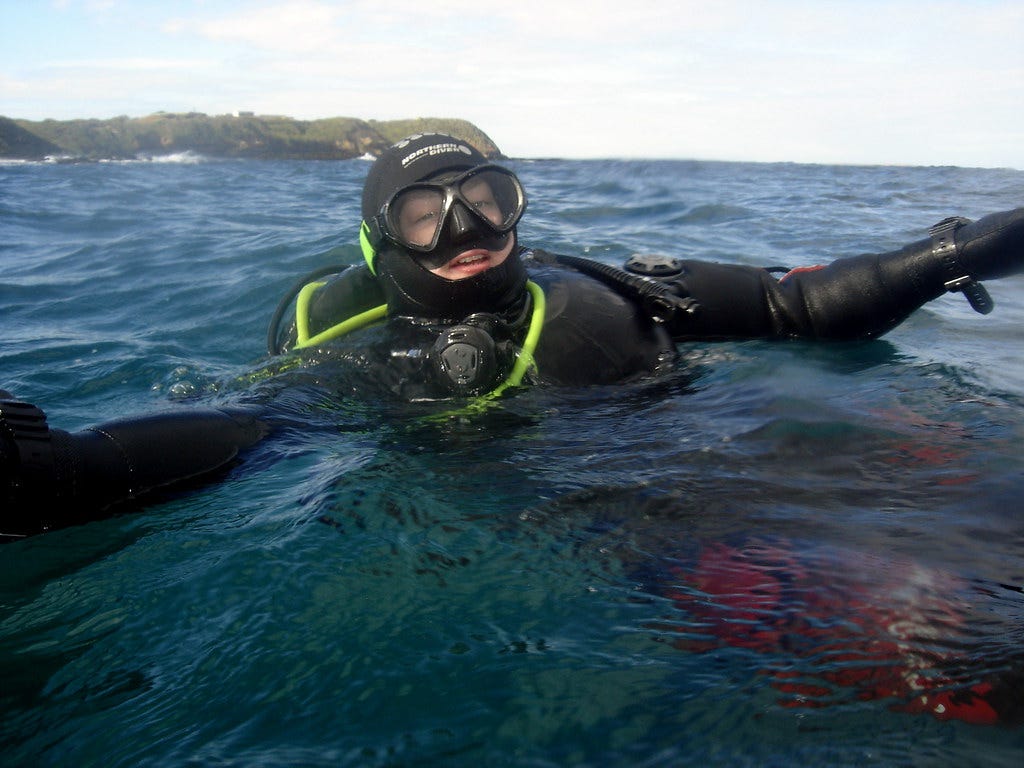E1: Old to begin...
It's time to ramp up the conversation around fluorinated-gases and their environmental ramifications. Here we go...
Hi Folks,
I can’t recall the exact quote but it was something along the lines of - “the hardest part of going to the moon is making the decision to go. The rest is just numbers…”
Going through the process of starting and writing a regular newsletter feels to me a bit like a moonshot. But I’ve made the decision to go. Once a week you will (no excuses :) get something from me that I hope is of value.
The subject of fluorinated gases (f-gases) may on the surface appear a little dry (ok more than a little). But having spent many hours down lots of different rabbit holes I can assure you there is an enormous amount to explore. Some of it eye-opening, some of it jaw-dropping and some plain maddening. In fact I’m struggling to work out how best to cover it all…
My intention is to write some more meaty articles around some of the bigger topics. Especially the transition that is going on within the industry and the push and pulls that go with that.
The idea of this newsletter however - especially in the first instance - is to keep it a bit lighter. I’ll pull out one or two bits of news from the week that I think are particularly important and add some thoughts around it. Along with a few fun facts thrown in.
I must also point out that I don’t know it all - there are many in this industry that I look up to and have much greater depth of experience. I’m still grateful to be learning.
However it also dawned on me that I’ve collated quite a bit of knowledge over the past decade. Just maybe I can help the folks that are one or two steps behind me…
Jeans and Jackets…
I recently attended the world’s largest refrigeration and cooling exhibition in Germany – Chillventa. After many years in SE Asia this was a real eye-opener and I used it as an opportunity to assess where the industry is on the environmental pathway.
My take. There are some reasons for optimism but the industry is changing only incrementally and is largely blind to what is coming down the track in terms of the refrigerant clean-up.
The industry is still manufacturing and marketing equipment that will be filled with environmentally toxic gases and at some point they are going to need dealing with…
You can find the full piece on the website here
More ambition?
One piece of recent news that could have far reaching implications globally. The MEP who serves as the vice chair on the committee responsible for the EU F-Gas regulations, has tabled some significant proposed amendments.
Why is it important:
The EU F-gas regulations set the benchmark for the control of f-gases. The current regulation is up for revision and was already seen as being ambitious. This proposal takes it a step further calling for far wider bans of equipment that use climate damaging refrigerants (HFCs) from as early as 2024 given that there are suitable alternatives. What was surprising however was to see the new generation of HFO refrigerants (often marketed as climate friendly) also being included in the ban. This has created a stir.
Who it affects:
While any changes to the regulation only directly affect the EU, it sends a clear message to the rest of the world and to manufacturers and technology providers. For countries in the process of transitioning to HFO refrigerants (such as Singapore) on the belief that they are better it also raises a yellow flag. Questions will no doubt be asked about the wisdom of moving to refrigerants that may be phased-out in the EU just as they are being phased-in in SE Asia…
Link to the article is here
Fun Facts - Where the F-gas hides…
Refrigerants are the most common type of f-gases (they make up ~80% of them).
However there are plenty of other surprising places where you’ll find f-gases - I’ll describe some of those here over the coming weeks…
This week: Insulation for scuba diving dry suits
The most potent of all the f-gases – SF6 (sulfur hexafluoride) – has a global warming potential of 25,200 (CO2 is the reference at 1 - so yes it is twenty five thousand times more potent). It was unknown to me until recently that there have been occasions where SF6 has been used as an insulation gas in cold water scuba diving (inside the divers dry suit). It is a non-toxic gas but a major climate pollutant. It seems that is not commonly used these days – thankfully.
I’ll start curating a list of these on the website shortly. But for now, that’s a wrap
‘till next time
Adrian
Fixed stuff here for newcomers
Quick point here. There is lots of news every week from the cooling industry and plenty of newsletters that cover it well. The intention is to keep it focussed on refrigerants and f-gases and importantly their environmental impact. That’s the lane I’ve chosen - I’ll do my best to stick to it.
Why any of this matters:
Emissions from f-gases and refrigerants have been the fastest growing greenhouse gas over the decade (yes more than CO2 and methane - check out IPCC WG3 summary for policy makers). They are also classed as super pollutants given their outsized global warming impact over the coming decades.
You can find my basic primer here and a plenty more detail in the whitepaper here
Reminder to those in management and doing reporting: If you’re not including refrigerant emissions in your inventories or sustainability reports – you’re not doing them right! Feel free to reach out if you need a hand.
Some useful permalinks
The scale of the climate challenge can often feel daunting. This piece helps me take a step back and understand where we need to focus first - recommend a read.
There are plenty of technology solutions available to address the cooling and refrigerant challenge. You can find many of them here
Beware when the same people who have contributed to the current f-gas problem propose you new refrigerant solutions… This is a good place to get up to speed.




